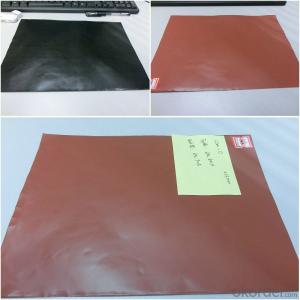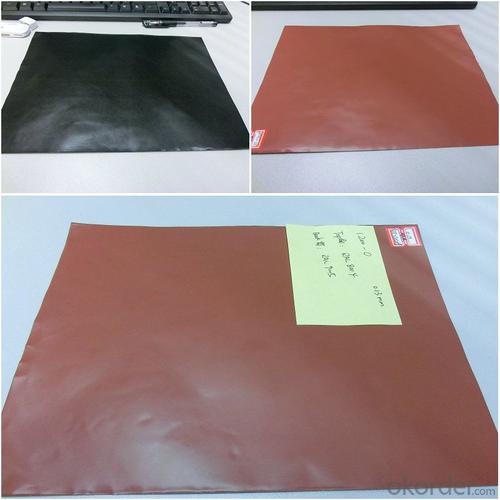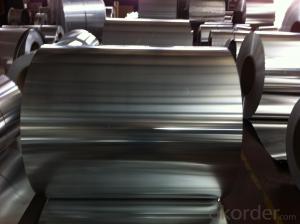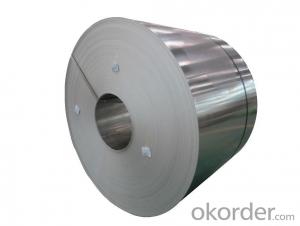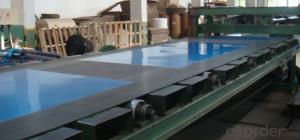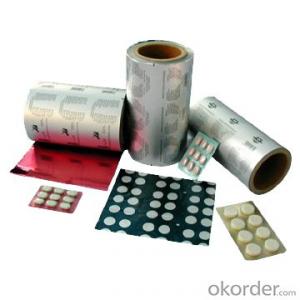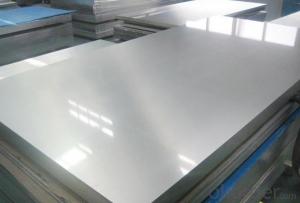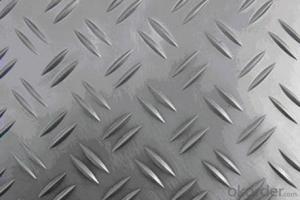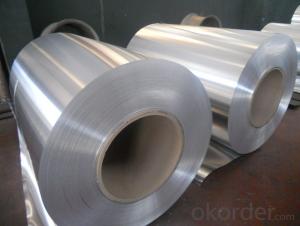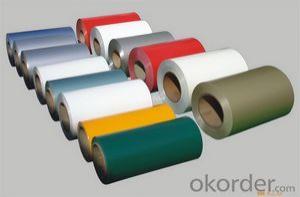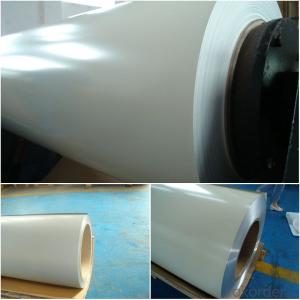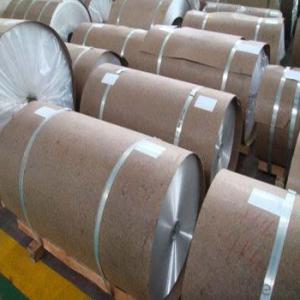Costco Aluminum Foil Sheets - Aluminum Alloy 1200-O Coil Sheet with PE Coating
- Loading Port:
- China Main Port
- Payment Terms:
- TT OR LC
- Min Order Qty:
- -
- Supply Capability:
- -
OKorder Service Pledge
OKorder Financial Service
You Might Also Like
1200-O PE coated Aluminium Coil Sheets
Back side color: RAL9005
PE Aluminum Coating Coils for ACP
Featuresof PE Aluminum Sheet:
1.Adopting precision rolling coating technology, our PVDF and PE coated coil canensure excellent adhesive without coating omission.
2. For thePE coated aluminum coil we produced, there are various colors for your choice.
3. Usinginfrared heating technology to protect environment from pollution.
4. Ourcoated aluminum coil has four-roller coating line, uniform coating thicknessand good features.
RawMaterial of the PE Aluminum Coating Coils:
1. Aluminum Coil: high strength aluminum withalloy of AA1100 (aluminum alloy is available with AA3003, AA3005, AA5005according to customer)
2. Surface Paint: PE, PVDF and specialpaints.
Specification of PE Aluminum Coating Coil
Width: 20mm~1590mm
Thickness: 0.06mm~1.0mm
External Diameter: ≤ 1500mm
Internal Diameter: 405mm, 505mm, 150mm, 75mm
Coil weight: ≤ 4000kg
PE coated aluminum coil is processed throughthe technics of roller coating and baking with precise polyester paints. Itscolor is glossy and with variety of colors enabling you to choose easily.Chromatic aberration is small, impact resistance is strong and easy to beprocessed, and all its performance has reached or surpassed the nationalcriteria. The products are widely used in indoor and door decoration, ceilings,room surface tiles, corrugated boards, wallpanels, advertisement boards, counters, home appliances, decoration in and outof autos and boats.
Performance of thecoating
Aluminum Thickness | Coating Thickness | MEK | T- Bend | Impact | Adhesion | Pencil Hardness | Boiling Water Proof |
0.3-1.5mm | ≥18μm | ≥100 Times | ≤2T | 50 kg•cm | 0 Grade | ≥HB | no change within 2 hours |
0.2-0.28mm | ≥18μm | ≥100 Times | ≤2T | 30kg•cm | 0 Grade | ≥HB | no change within 2 hours |
0.15-0.18mm | ≥18μm | ≥100 Times | ≤3T | 20 kg•cm | 0 Grade | ≥HB | no change within 2 hours |
0.08-0.12mm | ≥16μm | ≥80 Times | ≤4T | 10 kg•cm | ≤1 Grade | ≥HB | no change within 1 hour |
0.022-0.06mm | ≥12μm | ≥50 Times | - | - | ≤1Grade | ≥HB | no change within1 hour |
Color of Card
PE (polyester)
PE
Color Match
For custom' color requests, we can deal as following:
1. Supply a physical sample of custom color. A color sample on metal ispreferred. If other, it is also acceptable. But the color matching rate may benot good as color on metal.
2. New color sample is usually offered by our paint supplier in 5-7 days,special color should be in 7-10 days.
3. Upon receipt of color sample, please approve in writing as soon as possible.Once you approved, we will arrange purchasing and production.
Note: Color difference maybe occurred in different production batch, so it issuggested all panels are placed in one order for same project. And keep samedirection as arrow on protective film when installing to avoid any colordifference by vision
- Q: Explain the distinctions between aluminum sheets and aluminum foil in terms of thickness, uses, and properties.
- <p>Aluminum sheets and aluminum foil are both made from aluminum but differ in thickness and applications. Aluminum sheets are thicker and more rigid, typically used for construction, manufacturing, and as a packaging material. They offer better strength and durability. Aluminum foil, on the other hand, is very thin and flexible, commonly used for food packaging, cooking, and insulation. It's lightweight and has excellent heat and light reflection properties. Aluminum sheets are often anodized or coated for additional properties, while foil is valued for its purity and malleability.</p>
- Q: So my new farrier comes out tomorrow and charges $20 more for aluminum shoes and I was wondering why that is? Is one better than the other? My horse is a TB hunter jumper. Tell me what you think :)
- Aluminum has no wearability. Steel shoes can be re-set a number of times, which can save you money. If you ride your horse out on trails at all, you'll go through shoes like crazy. Aluminum is such soft metal that it's really not practical for most horses.
- Q: What are the potential health risks associated with handling aluminum sheets?
- <p>Working with aluminum sheets can pose certain health concerns, primarily due to inhalation of aluminum dust or fumes. Long-term exposure may lead to respiratory issues and potentially neurological problems. Aluminum dust can cause irritation to the eyes, nose, and throat. In some cases, it may contribute to the development of Alzheimer's disease, although this link is still debated. It's important to follow safety guidelines, such as using proper ventilation and wearing protective gear like masks and gloves, to minimize these risks.</p>
- Q: What are the disadvantages of using aluminum sheets?
- One major disadvantage of using aluminum sheets is their relatively low strength compared to other materials like steel. This can limit their application in certain industries or environments where high structural integrity is required. Additionally, aluminum sheets are prone to corrosion, especially when exposed to certain chemicals or salty environments, which can reduce their lifespan and durability. Lastly, aluminum sheets can be more expensive than other materials, making them less cost-effective for certain projects or budgets.
- Q: Can the aluminum sheets be used for manufacturing musical instruments?
- Yes, aluminum sheets can be used for manufacturing musical instruments. Aluminum is a lightweight and versatile material that offers several advantages for instrument manufacturing. It is known for its excellent sound transmission properties, which makes it suitable for creating resonant and vibrant tones in musical instruments. Additionally, aluminum is highly durable and resistant to corrosion, ensuring that the instruments will withstand the test of time. Many percussion instruments, such as cymbals and bells, are commonly made from aluminum sheets due to their ability to produce clear and rich sounds. Moreover, aluminum can also be shaped and formed into various instrument components, making it a popular choice for constructing brass instruments like trumpets and trombones. Overall, aluminum sheets are a viable option for manufacturing musical instruments and have been successfully utilized in the industry.
- Q: How to mix solid aluminium sheet with solid copper sheet (using heat?) to make a compound.
- As copper and aluminum are both metals and both have positive charges, you can not form a compound with them. You can, however, create an alloy out of them.
- Q: Can aluminum sheets be perforated for decorative or functional purposes?
- Yes, aluminum sheets can be perforated for both decorative and functional purposes. Perforating aluminum sheets involves creating a pattern of holes or perforations in the metal surface. These perforations can serve various purposes depending on the specific application. For decorative purposes, perforated aluminum sheets are commonly used in architecture and interior design. The patterns of holes can add visual interest and create unique designs, allowing for the play of light and shadow. It can be used for decorative screens, partitions, facades, and ceiling panels, among other applications. Perforated aluminum sheets offer versatility in design, as different hole sizes, shapes, and arrangements can be used to achieve the desired aesthetic effect. In terms of functional purposes, perforated aluminum sheets provide several advantages. Firstly, they can improve airflow and ventilation in applications such as HVAC systems, air-conditioning units, and speaker grilles. The perforations allow air to pass through while still maintaining the structural integrity of the sheet. Secondly, perforated aluminum sheets can be used for sound absorption and noise reduction. The holes in the sheet disrupt sound waves, reducing noise levels in areas such as auditoriums, concert halls, and industrial facilities. Additionally, perforated aluminum sheets have practical applications in filtration and separation processes. They can be used as screens or sieves to separate particles of different sizes, allowing for the filtration of liquids or gases. These sheets are also used in the manufacturing of various industrial equipment, such as vibrating screens, grain dryers, and centrifuges. In summary, aluminum sheets can indeed be perforated for both decorative and functional purposes. Whether it is to enhance the visual appeal of a space, improve airflow, reduce noise levels, or aid in filtration processes, perforated aluminum sheets offer a versatile solution for a wide range of applications.
- Q: Are aluminum sheets suitable for marine hulls?
- Indeed, marine hulls can indeed be made using aluminum sheets. The utilization of aluminum in boat construction is widespread due to its numerous advantageous properties. The lightweight nature of aluminum enables enhanced fuel efficiency and increased speed. Furthermore, its exceptional resistance to corrosion renders it well-suited for prolonged exposure to saltwater. Moreover, aluminum possesses remarkable strength and durability, thereby ensuring the integrity of the hull's structure. Additionally, aluminum can be easily manipulated into intricate shapes, allowing for the creation of innovative hull designs. In summary, aluminum sheets represent a dependable and efficient option for marine hulls, delivering a robust and corrosion-resistant framework that enhances the boat's performance and lifespan.
- Q: I am ultimately looking to have a bike that is good for both everday commuting and touring with panniers/racks long distance with camping. From what I've read on the internet steel frames are more forgiving and ride smoother. The guy at my local bike shop tells me aluminum frames have more flex and ride better. I don't know if he's just trying to make a sale (Giant dealer) or to trust him, unfortunately the staff there are all just racers not tourers. If you can recommend any brands/models to check out that'd be good. From my research thus far I am in love with Co Motion bikes, just not the price! I'm looking at $1000 max for a good touring bike. Thanks!
- I've been on an aluminum frame (Trek 1220) for about 16,000 miles and I find it somewhat unforgiving. I test drove, after buying my bike, a steel frame and I thought it was more comfortable. The thing about the aluminum frame is that it corners GREAT due to its rigidity. Find a bike shop that will let you take a tester for about a 1/2 hour and take the bike for a test drive on a somewhat irregular road. You're investing a lot so, you should test drive.
- Q: What are the common surface treatments for aluminum sheets used in outdoor applications?
- The common surface treatments for aluminum sheets used in outdoor applications include anodizing, powder coating, and PVDF coating. Anodizing is an electrochemical process that creates a durable, corrosion-resistant layer on the surface of the aluminum sheet. It involves immersing the sheet in an electrolyte solution and applying a current to form a thick oxide layer. Anodized aluminum sheets are highly resistant to weathering, UV rays, and corrosion, making them suitable for outdoor applications. Powder coating is a dry finishing process where a powdered paint is electrostatically applied to the aluminum sheet. The sheet is then heated, causing the powder to melt and form a smooth, durable coating. Powder coating offers excellent resistance to weathering, scratches, and fading, making it ideal for outdoor use. Additionally, it provides a wide range of color options and a uniform, attractive appearance. PVDF (polyvinylidene fluoride) coating is a high-performance coating that combines resin with ceramic particles. This coating is applied as a liquid and then cured at high temperatures to form a continuous, protective film on the aluminum sheet. PVDF coatings provide exceptional resistance to fading, chalking, and chemical exposure, making them suitable for harsh outdoor environments. They also offer excellent color retention, durability, and resistance to UV rays. All these surface treatments enhance the durability, weather resistance, and aesthetic appeal of aluminum sheets, making them ideal for outdoor applications such as architectural facades, signage, transportation, and marine industries. It is important to select the appropriate surface treatment based on the specific requirements of the outdoor application, considering factors such as durability, color options, and resistance to weathering and corrosion.
Send your message to us
Costco Aluminum Foil Sheets - Aluminum Alloy 1200-O Coil Sheet with PE Coating
- Loading Port:
- China Main Port
- Payment Terms:
- TT OR LC
- Min Order Qty:
- -
- Supply Capability:
- -
OKorder Service Pledge
OKorder Financial Service
Similar products
Hot products
Hot Searches
Related keywords
